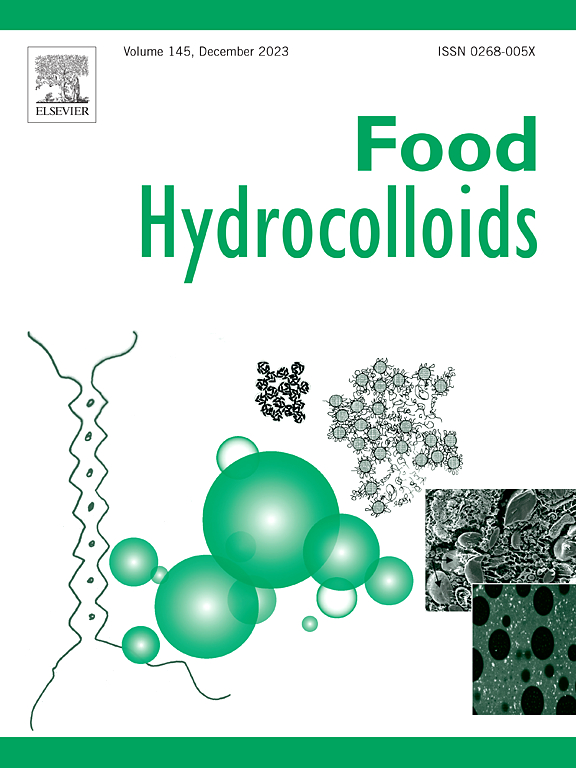Fabrication and characterization of novel sericin bigels for the co-encapsulation of bioactive ingredients and in vitro gastrointestinal release profile
IF 11
1区 农林科学
Q1 CHEMISTRY, APPLIED
引用次数: 0
Abstract
While sericin, a protein from silkworms, has been explored on biomaterials and pharmaceuticals, its integration into functional food systems remains underdeveloped. This study addresses the gap in utilizing the sericin in food processing by innovating the novel sericin bigel beads with a co-encapsulation function. Bigel beads were formulated using different ratios (1:1, 1:4, and 1:8) of oleogels and sericin hydrogels encapsulating β-carotene and L-ascorbic acid simultaneously. Their physical characteristics, stability, and release profile through in vitro gastrointestinal (GI) digestion were determined. Bigel beads with lower oleogel content had low hardness values. Bigel beads with equal contents of oleogel and hydrogel exhibited the highest water-holding capacity. On Fourier transform-infrared spectroscopy, no new peak formation or peak shifts were found, signifying the lack of interaction between oleogels and hydrogels. On differential scanning calorimetry analysis, bigel beads with higher sericin hydrogel contents exhibited a stronger and more stable gel network structure. The encapsulation efficiency (EE) of β-carotene in bigel beads with higher oleogel contents showed higher stability, whereas beads with higher hydrogel contents had a higher EE of L-ascorbic acid. Bigel beads stored at 4 °C and 25 °C exhibited similar stability, retaining approximately 40 % of bioactive compounds after 15 days of storage. In the simulated GI digestion of bigel beads, the release rate of encapsulated bioactive compounds was higher during the intestinal phase. This study offers a new perspective on the co-encapsulation of lipophilic and hydrophilic bioactive components in sericin bigel bead, showing promise for the creation of functional food with controlled nutrient delivery.

求助全文
约1分钟内获得全文
求助全文
来源期刊

Food Hydrocolloids
工程技术-食品科技
CiteScore
19.90
自引率
14.00%
发文量
871
审稿时长
37 days
期刊介绍:
Food Hydrocolloids publishes original and innovative research focused on the characterization, functional properties, and applications of hydrocolloid materials used in food products. These hydrocolloids, defined as polysaccharides and proteins of commercial importance, are added to control aspects such as texture, stability, rheology, and sensory properties. The research's primary emphasis should be on the hydrocolloids themselves, with thorough descriptions of their source, nature, and physicochemical characteristics. Manuscripts are expected to clearly outline specific aims and objectives, include a fundamental discussion of research findings at the molecular level, and address the significance of the results. Studies on hydrocolloids in complex formulations should concentrate on their overall properties and mechanisms of action, while simple formulation development studies may not be considered for publication.
The main areas of interest are:
-Chemical and physicochemical characterisation
Thermal properties including glass transitions and conformational changes-
Rheological properties including viscosity, viscoelastic properties and gelation behaviour-
The influence on organoleptic properties-
Interfacial properties including stabilisation of dispersions, emulsions and foams-
Film forming properties with application to edible films and active packaging-
Encapsulation and controlled release of active compounds-
The influence on health including their role as dietary fibre-
Manipulation of hydrocolloid structure and functionality through chemical, biochemical and physical processes-
New hydrocolloids and hydrocolloid sources of commercial potential.
The Journal also publishes Review articles that provide an overview of the latest developments in topics of specific interest to researchers in this field of activity.
 求助内容:
求助内容: 应助结果提醒方式:
应助结果提醒方式:


